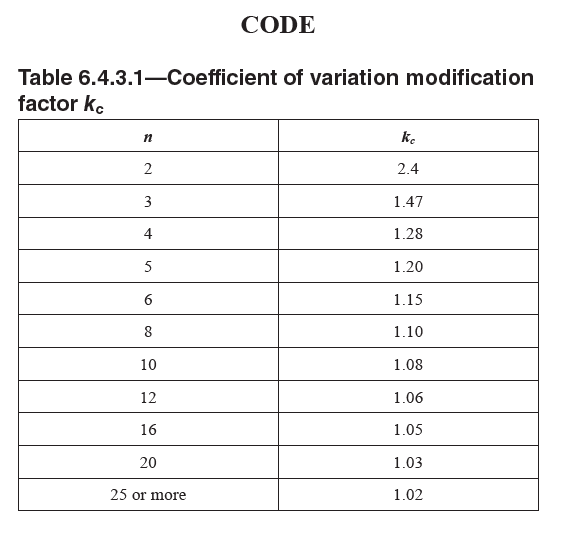Hi All,
I have analyzed and existing concrete pan joist roof structure (1958)for snow drift loads that the minimum compressive strength of the concrete specified on the drawings is 3,000 psi. The joists are adequate in flexure, but are about 15% overstressed in shear. I have already taken advantage of the 1.1 increase in shear capacity per ACI section 9.8. The joists are adequate in shear utilizing 4,000 psi compressive strength. The only reinforcement scheme I think is feasible is carbon fiber reinforcement.
I am considering proposing to the owner and architect the option of taking some cores for testing to determine if the concrete has 4,000 psi compressive strength and possibly eliminate the need for any reinforcement. It is a hospital, so it may not be very easy to obtain the cores, and it is difficult to find a location where it can be done. The roof is being replaced so it could be coordinated to do the cores from the top side of the roof, but I am not sure how I feel about coring through a beam, but it can be done. The roof deck between the joist is 2" thick and will not work for testing per ASTM C42. The minimum diameter is 3.70 in., so the desired length or depth of the core is 4" to 8", with reduction factors for a core l/d less than 2. I am looking into taking 2-3 cores and also some form of non-destructive testing that can use the cores to correlate the results as added verification.
What I am struggling with is if I can take the average of the core compressive strength tests or if those will have to be reduced based on the limited amount of test similar to cast cylinder testing for new construction. I think there is a good probability that the existing concrete fc is 4,000 psi+, but if it needs to test at 5,200 psi to say it is good for 4,000 psi that may be a stretch and not worth exploring.
I would appreciate any recommendations based on a similar investigation. Thanks!
I have analyzed and existing concrete pan joist roof structure (1958)for snow drift loads that the minimum compressive strength of the concrete specified on the drawings is 3,000 psi. The joists are adequate in flexure, but are about 15% overstressed in shear. I have already taken advantage of the 1.1 increase in shear capacity per ACI section 9.8. The joists are adequate in shear utilizing 4,000 psi compressive strength. The only reinforcement scheme I think is feasible is carbon fiber reinforcement.
I am considering proposing to the owner and architect the option of taking some cores for testing to determine if the concrete has 4,000 psi compressive strength and possibly eliminate the need for any reinforcement. It is a hospital, so it may not be very easy to obtain the cores, and it is difficult to find a location where it can be done. The roof is being replaced so it could be coordinated to do the cores from the top side of the roof, but I am not sure how I feel about coring through a beam, but it can be done. The roof deck between the joist is 2" thick and will not work for testing per ASTM C42. The minimum diameter is 3.70 in., so the desired length or depth of the core is 4" to 8", with reduction factors for a core l/d less than 2. I am looking into taking 2-3 cores and also some form of non-destructive testing that can use the cores to correlate the results as added verification.
What I am struggling with is if I can take the average of the core compressive strength tests or if those will have to be reduced based on the limited amount of test similar to cast cylinder testing for new construction. I think there is a good probability that the existing concrete fc is 4,000 psi+, but if it needs to test at 5,200 psi to say it is good for 4,000 psi that may be a stretch and not worth exploring.
I would appreciate any recommendations based on a similar investigation. Thanks!


